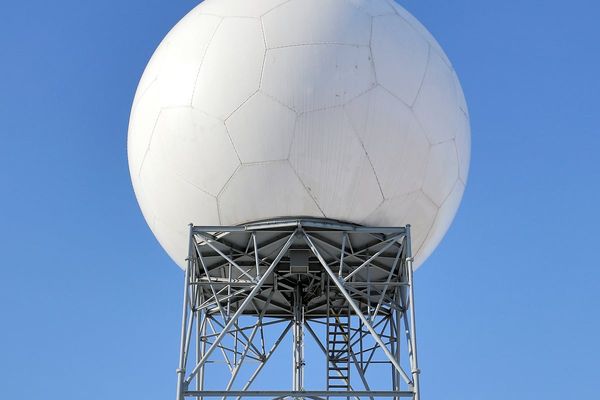
Nearly a quarter of U.S. auto manufacturing capacity sat idle at the end of last year. But firing up that extra space isn’t so easy. Some automakers have more flexibility than others and many affordable EVs and gas cars built abroad can’t just be made in the U.S. without losing their cost edge. Extra factory space won’t extinguish the tariff fire.
Welcome back to Critical Materials, your daily round-up of news and events shaping up the world of electric cars and technology. Also on the radar today: President Trump’s tariffs might make China’s auto market even stronger and Japanese automakers are teaming up with Chinese software giants in order to remain relevant in the region.
30%: U.S. Car Plants With Excess Capacity, And Those Without It

Some U.S. automakers are already pushing their factories to the limit. Honda is running at nearly 95% capacity, according to AutoForecast Solutions. BMW (93%), Mercedes-Benz (89%), and Toyota (88.5%) aren’t far behind.
These plants are humming to meet local and global demand and they don’t have much room to easily shift production of foreign-built models to the U.S. Meanwhile, General Motors has more than a quarter of its U.S. capacity unused. Stellantis (61.5%), Nissan (57%), and Volvo (46%) also have room to spare.
But filling those empty spaces isn’t simple. When Volvo moved some EX30 production from China to its Ghent, Belgium plant, it had to invest €200 million to overhaul the facility. That meant a new platform, nearly 600 new or refurbished robots, an expanded battery hall, a new door line and a new battery pack assembly line.
You can’t just dust off old robots and start building EVs. As AutoForecast’s Sam Fiorani told Automotive News:
“The rhetoric that moving assembly of vehicles into open spaces is easy and quick” is not accurate, said Sam Fiorani, vice president of global vehicle forecasting at AutoForecast Solutions. “There is some room, but a lot of it would entail large amounts of investment to change over lines. It’s a whole logistical nightmare that these plants aren’t set up for.”
That said, some Michigan plants could be ready to pivot. Stellantis’ Warren Truck plant—where the Jeep Wagoneer and Grand Wagoneer are built—is operating at just 17% capacity. Since those SUVs share a platform with the Ram 1500, the plant already has the tools and machinery to handle more production.
Ford’s Mustang plant in Flat Rock, Michigan is another possibility. It’s currently running just one shift and is reportedly a “prime candidate” to move production of the Mustang Mach-E from Mexico to the U.S. The Mach-E is one of the best-selling EVs in America, helped by its $36,495 starting price made possible by lower-cost Mexican production. Whether Ford could keep that price if it shifts production stateside is unknown.
And one last thing: don’t be fooled by all that idle capacity. Some automakers are deliberately keeping space open for future models. That’s why we’re not seeing a massive reshuffling of production yet. For now, automakers are in wait-and-watch mode, hoping to strike a deal with the Trump administration before their pre-tariff inventories run dry.
60%: Tesla Price Hikes In Canada Are Steep

The fallout from President Trump’s tariff war has started to affect the company run by his biggest financial backer during last year’s presidential elections. That would be Elon Musk and Tesla which, has raised prices of its electric cars in Canada by as much as $30,000 (Canadian) for some high-end models, according to local outlet Drive Tesla Canada.
Prices of the Tesla Model 3 are up from $68,990 to $79,990 due to Canada’s retaliatory tariffs on President Trump’s sweeping 25% tariffs on goods imported from Canada and Mexico. The Model Y is now $15,000 more expensive across the northern border, with its price jumping from $69,990 to $84,990.
The Model S and Model X, meanwhile, are $19,000 more expensive, with the former now starting at $133,990 and the latter $154,990. Prices of the Tesla Cybertruck all-wheel drive have increased by $25,000 to $139,900 whereas the Cyberbeast has taken a steep $30,000 hike. It now costs a whopping $167,900 in Canada.
None of this is good news for a company with tanking sales and plummeting profits. Tesla's brand image has taken a hammering in recent weeks, and there's no indication it will improve anytime soon.
90%: Japanese Automakers Turn To ‘Chinese Brains’

If you can’t beat them, why not join them? Japanese automakers are facing existential crises in China. Now they’re teaming up with local players to stay relevant.
Despite Toyota sedans being so popular in the U.S., the automaker has decided to launch its first electric sedan, the bZ7, in China. That model will use tech giant Huawei’s HarmonyOS for its in-vehicle software and infotainment. Chinese start-up Momenta will supply the advanced driver assistance system (ADAS) for the Toyota EV. Nissan has also partnered with Momenta in China for the same. And Honda on the other hand has joined hands with DeepSeek for voice commands in its vehicles in China. Honda is also working with CATL for its battery tech, Nikkei Asia reported.
The tech advancements in China are beyond anyone’s wildest imagination. Not only have Chinese automakers raced past the U.S. and the rest of the world, but are also fiercely competing amongst themselves to stay ahead.
100%: Will You Pay More For A U.S.-Made Car?

A latest Financial Times survey asked Americans if they wanted more factory jobs here in the U.S. Most of them agreed, as long as they didn’t have to work in them. And that’s across party lines. People who voted for either party last year said they personally wouldn't be better off working in manufacturing.
So here’s some food for thought: Would you be willing to pay more for a car if was built in the U.S., or is price still the biggest factor for you? Leave your thoughts in the comments.
Have a tip? Contact the author: Suvrat.kothari@insideevs.com







